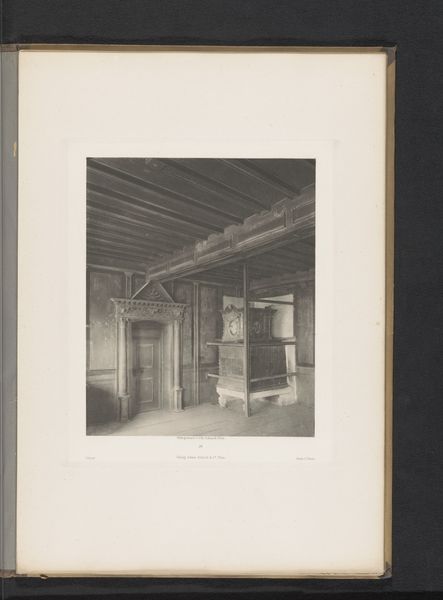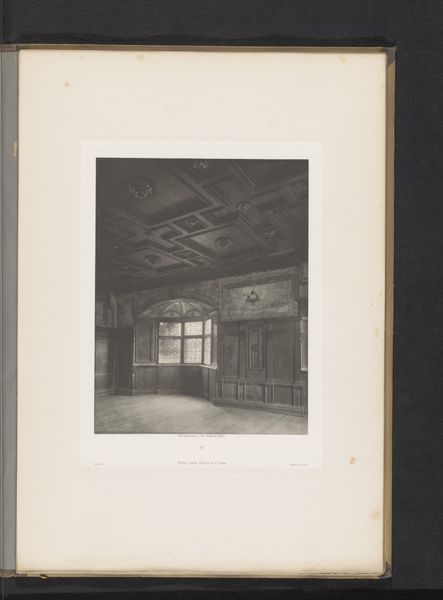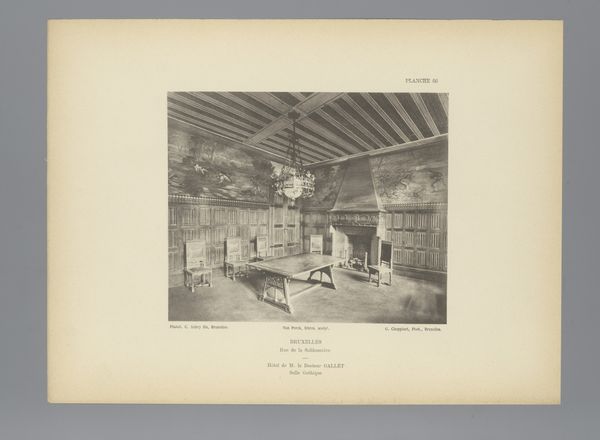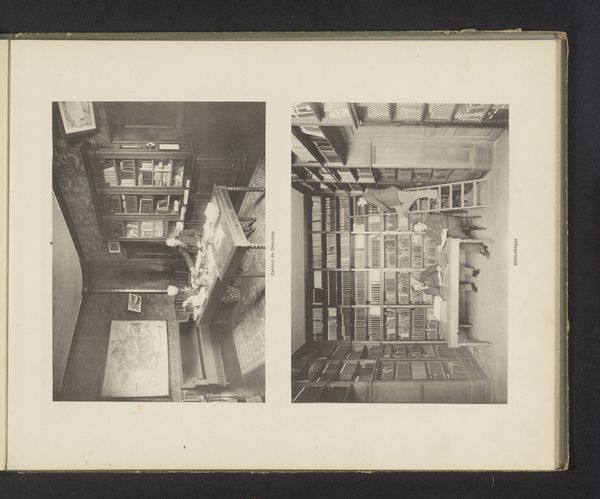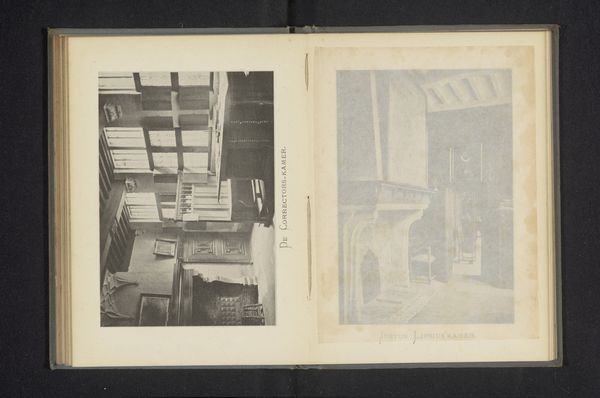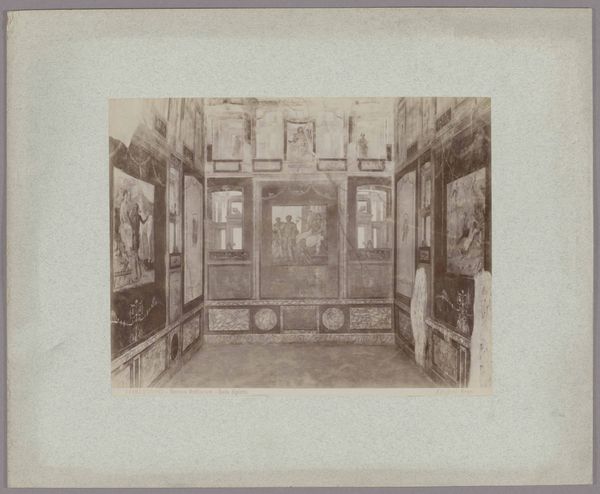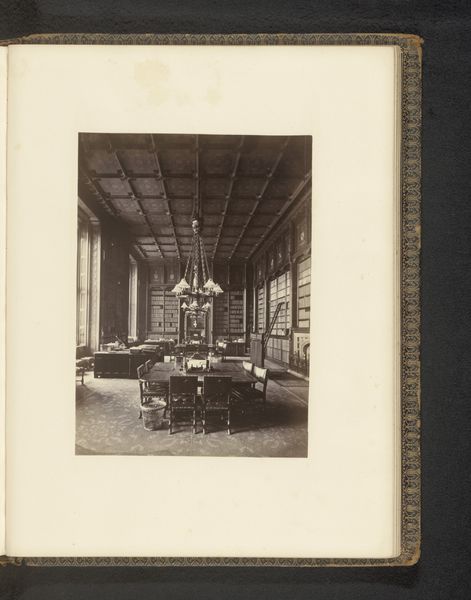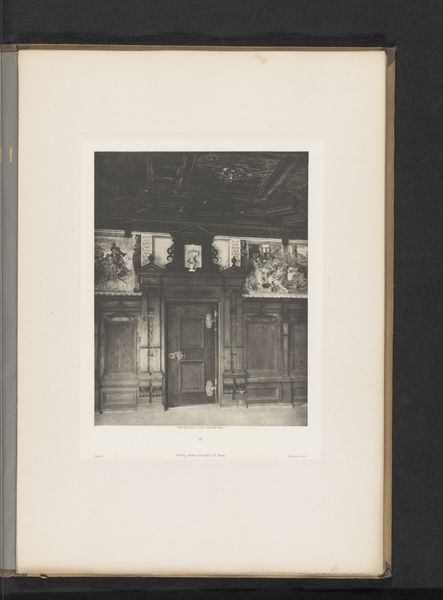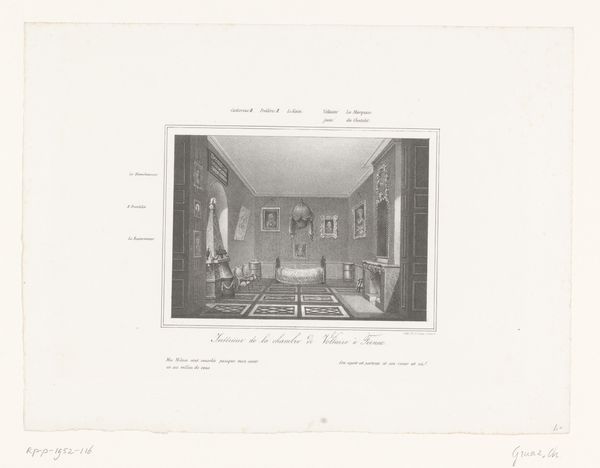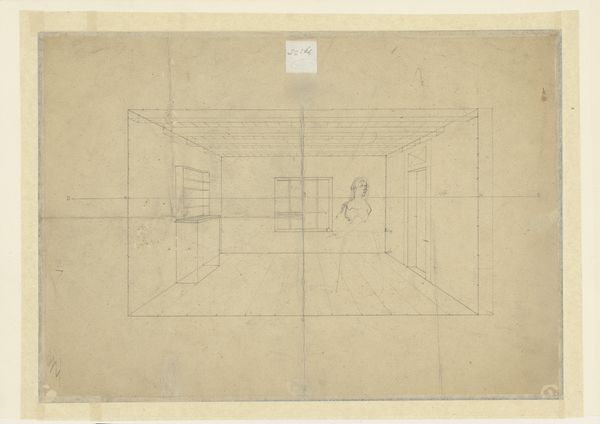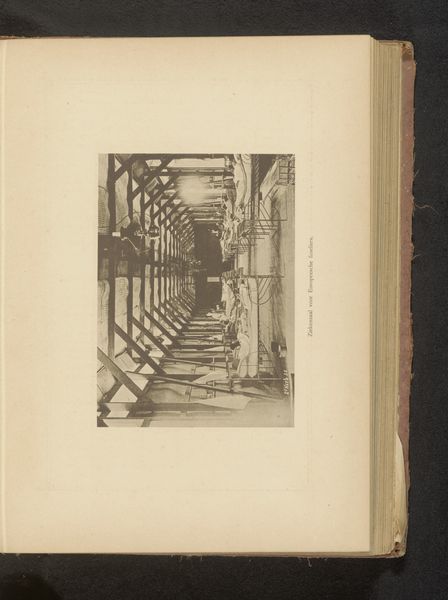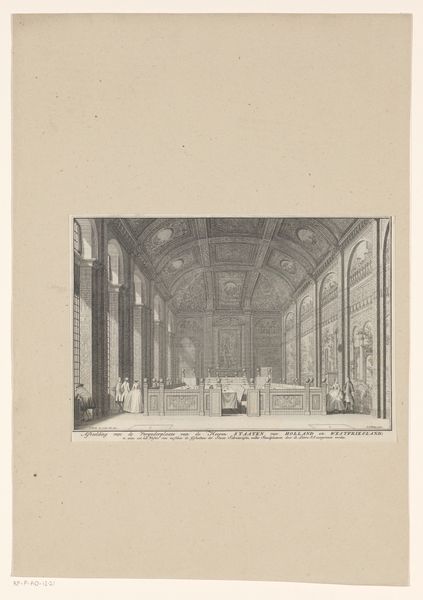
Interieur van de doopsgezinde kerk van de Jan Jacobsgezinden in de Bloemstraat te Amsterdam 1760 - 1767
0:00
0:00
print, engraving, architecture
#
print photography
#
dutch-golden-age
# print
#
cityscape
#
history-painting
#
engraving
#
architecture
#
realism
Dimensions: height 160 mm, width 220 mm
Copyright: Rijks Museum: Open Domain
Editor: Here we have "Interior of the Mennonite Church of the Jan Jacobszoon in the Bloemstraat in Amsterdam," an engraving by Caspar Jacobsz. Philips, created between 1760 and 1767. It strikes me as exceptionally calm, almost austere. What layers do you see in this piece beyond the immediate representation of the church's architecture? Curator: This engraving offers a glimpse into the Dutch Golden Age and its complexities. Beyond the architecture, consider the context: the Mennonites, a religious minority, and their desire for a space of their own. How does this interior, rendered with such precise realism, reflect the social dynamics of the time? Does it challenge or reinforce existing power structures? Editor: It's definitely understated. You wouldn't guess from looking at it that this was a place of potential resistance. What do you mean by 'power structures?' Curator: Think about the relationship between the dominant Reformed Church and dissenting groups like the Mennonites. Architecture, even in its seeming simplicity, can either uphold or subvert the norms and values of those in power. How does the bareness of this interior contrast with the grandeur of other churches of the period? Is there an implied critique within this choice of representation? What does that lack of overt visual grandeur communicate about the values of the Jan Jacobsgezinden? Editor: So the print acts almost like a quiet manifesto? Highlighting a different path and value system? Curator: Precisely. It asks us to reconsider what constitutes 'grandeur' or 'power'. Where might one look to find it: In visual opulence? Or community-minded restraint and the celebration of common purpose? This engraving invites a deeper dialogue on visibility, religious tolerance, and alternative narratives within the Dutch Golden Age. Editor: That gives me so much more to think about than just the architecture. Thanks! Curator: My pleasure! Always remember to seek alternative viewpoints to unpack all narratives.
Comments
No comments
Be the first to comment and join the conversation on the ultimate creative platform.
